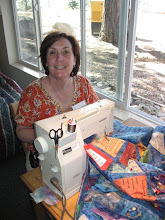April 19, 2016
After breakfast we had a private lecture by Camilo Garcia from the
National Union of Writers and Artists in Cuba (UNEAC). He discussed the economic, political and
social challenges Cuba faces from pre-revolution (1959), to post embargo and
Russian departure from Cuba, a time they call the “troubled times.” Before being with the UNEAC Mr. Garcia was a
diplomat from Cuba to the US, Canada and Europe. He was one of the privileged few who were
able to travel outside Cuba. Cubans are
happy that the “blockade” as they call the embargo, will be lifted. Cubans like Americans and want us to
visit.
After the lecture we traveled a short distance in our bus to
Old Habana. By the way, the bus was made
in China. No really! It was quite nice. We walked through old Habana seeing many
crumbled buildings and some newly restored buildings. Both rural and urban homes, where most Cubans
live are run down. The norm is peeling
paint, concrete floors, unsafe stairs (what railings?) and walks, crumbling
walls, no windows just wooden louvres, and no air conditioning. In 1959 when Fidel came into power the
wealthy Americans lived in Old Habana in lovely, large exquisitely furnished
and maintained homes. These Americans
were mostly involved in mob activities and lots of money flowed in Cuba. Cuba was the American mob bosses
playground. When Fidel came into power
all the Americans escaped immediately leaving everything, including their
homes, furnishings and cars. That is why
there are so many 1950’s American made cars in Cuba today. Also the reason there are so many 1950’s
American cars in Cuba is because Cuba doesn’t build much, including cars. (Most people ride bikes.) The other type of car we saw were very
utilitarian small box like cars from Russia.
They come in your choice of color as long as your choice is blue or
white. When Fidel came into power in
1959 all these beautiful mansions in Old Habana and elsewhere in Cuba were
assigned to multiple families. So a home
that was meant for one family, was now home to five or six families. Over the last 57 years no one has kept these
homes up. Toilets break and they stay
broken, walls have holes and are not fixed, tile is broken and never repaired,
water and electrical lines are not repaired….after 57 years that’s a lot of
crumbling buildings.
The United States Embassy
After lunching at La Imprenta, we went to the Old Habana restoration school, La Escuela Taller Gaspar Melchor de Jovellanos. There we met the young students who are accepted to this school. It is difficult to get into this school. The students spend 2 years at the school learning varied types of restoration and restoration materials. They work in Old Habana. This is their “free education.”
We then walked to the Camera Obscura. I found this interesting and odd at the same
time. You go up a rickety elevator that
holds only ocho (8) people. We were then
ushered into a small dark room with a large white dish like thing. It reminded me of the old dishes people had
in their yards to get TV and internet.
There was a mirror up in the ceiling that reflected onto the white dish
(sphere.) Then a man used a stick to
move the mirror around and we could see all of Habana! We thought it was cool, but so impractical
given the thousands of other things that Cuba could spend money on. After the dizzying display, we got out of the
tiny room and walked around the roof of the building to see, you guessed it,
all of Habana! Just be careful when you
get near the roof line. There are no
railings and there were partial rebar pieces sticking up.
A domed building left by the Russians.
Fortress de San Carlos de la Cabana
We were taken to Revolutionary Square. You might have seen pictures of Mr. Obama
speaking to the Cubans at this location.
It is basically a black topped parking lot type area.
One of the buildings has an outline picture of Che Guevera.
While we were duly impressed by this Cuban spot of
importance, we were more impressed by the taxis that drove up and parked along
the curb. Oh yeah!!!
I took these two pictures with my cell phone. They are some of my most favorite pictures of the trip. I love the angle, colors and the memory it provides!
Going back to the hotel we met in small groups with “select”
individuals to discuss what life, work and family life is like in Cuba. “Everything is free” is the general
mantra. Education, health care, food, etc.
are all free. But homes and apartments
are hard to get. Many live in their
parents’ home, which is most likely an apartment, and take over the home at the
parent’s death. Interestingly we were
told that there are 127 people for every 1 doctor. The doctor lives in the neighborhood of the
community he or she serves.
So “you can see the Dr. anytime for free.” We later found out that the “local” Doctor
is the local Doctor for many local neighborhoods. The Doctor works 1 day a week for a certain
number of hours at each location.
We had a nice dinner at La Casa.
See you tomorrow! bc and gc





























No comments:
Post a Comment